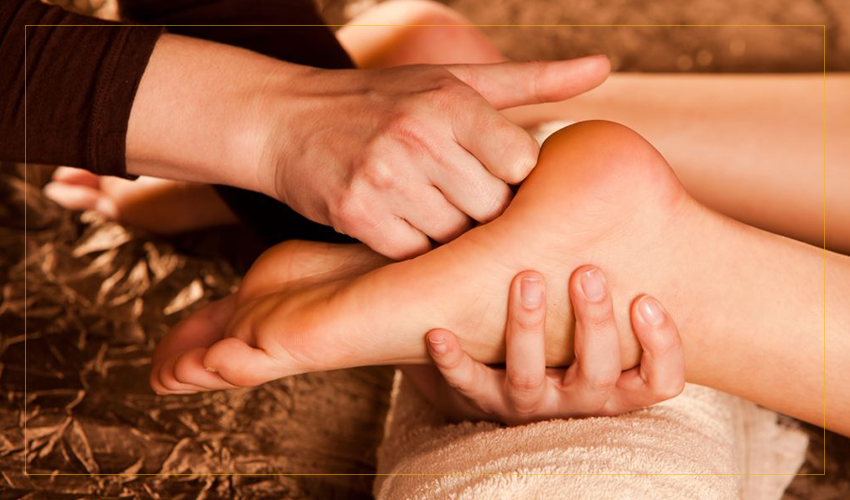
In the realm of natural medicine and all natural healing methods, reflexology attracts attention as a significantly popular and fascinating technique. This old method, rooted in the idea that specific points on the hands, feet, and ears represent various body organs and systems of the body, has been getting grip in the Western globe as a complementary therapy for numerous health issues.
Recognizing the Foundations of Reflexology Reflexology is based on the concept that there are reflex locations in the feet and hands that are linked to all components of the body. Practitioners think that using pressure to these particular factors can promote wellness in the matching body organs through power paths. While the exact devices are not completely understood by contemporary scientific research, numerous people report significant advantages from reflexology sessions.
The concept behind reflexology recommends that the body is split into 10 vertical zones, each corresponding to fingers and toes. By using stress to specific factors within these areas, reflexologists intend to launch blocked power and promote recovery.
The Historical Journey of Reflexology The beginnings of reflexology can be mapped back countless years. Old Egyptian tomb paints dating back to 2330 BC portray what seems foot and hand massage therapy. Likewise, traditional Chinese medicine has actually long recognized the connection between stress factors and the body’s general health and wellness. Nonetheless, modern reflexology as we understand it today was developed in the very early 20th century by Dr. William Fitzgerald and later fine-tuned by Eunice Ingham, commonly referred to as the “mother of reflexology.”
The Reflexology Process: What to Expect A regular reflexology session begins with an assessment where the professional goes over the client’s health and wellness background and existing issues. The client then removes their socks and shoes and sits pleasantly or lies down. Utilizing their hands, fingers, and occasionally little devices, the reflexologist applies differing degrees of pressure to particular points on the hands, feet, or ears.
The session normally lasts between 30 to 60 mins, throughout which customers commonly report sensation deeply unwinded. Some people experience feelings in various other parts of their body as different factors are boosted, which reflexologists translate as energy relocating via the body.
秋葉原 of Reflexology While scientific research study on reflexology is recurring, many individuals report a series of gain from regular sessions. These may include:
Lowered stress and anxiety Improved blood circulation Enhanced sleep quality Relief from headaches and migraine headaches Alleviation of digestive system issues Boosted energy degrees Support for hormone balance It’s crucial to keep in mind that reflexology is usually considered a corresponding therapy and should not change conventional clinical therapies. Many locate it a beneficial addition to their overall health regimen.
Reflexology in Modern Healthcare As rate of interest in alternative health and wellness techniques grows, reflexology is discovering its place in different medical care setups. Some medical facilities currently supply reflexology as part of their integrative medicine programs, particularly for individuals managing chronic discomfort, cancer-related symptoms, or stress and anxiety. Many medical spas and wellness facilities also consist of reflexology in their service offerings, identifying its capacity for stress alleviation and relaxation.
Study released in the Journal of Traditional and Complementary Medicine suggests that reflexology may work in lowering pain and boosting leisure, making it an appealing corresponding therapy for various problems.
Do It Yourself Reflexology: Self-Care in the house While expert sessions can be advantageous, some basic reflexology techniques can be exercised in your home. Basic foot rolls using a tennis round or reflexology devices can aid promote points on the feet. Many people locate this a stress-free way to relax at the end of the day or to alleviate foot pain from representing long durations.
The Future of Reflexology As extra research is carried out, reflexology may gain further acknowledgment in the clinical neighborhood. Present studies are discovering its prospective applications suffering monitoring, anxiousness reduction, and also as a helpful therapy for people undergoing cancer treatment. The non-invasive nature of reflexology, incorporated with its potential to promote relaxation and general health, makes it an eye-catching alternative for those looking for all-natural strategies to health care.
Whether watched as a holistic art or a science-based treatment form, reflexology supplies an one-of-a-kind technique to understanding and sustaining the body’s all-natural healing procedures. As we remain to check out the detailed connections between various parts of our body, methods like reflexology advise us of the power of touch and the capacity for recovery that lies within our own hands and feet.
Comprehending the Foundations of Reflexology Reflexology is based on the principle that there are response areas in the feet and hands that are linked to all parts of the body. Modern-day reflexology as we understand it today was created in the early 20th century by Dr. William Fitzgerald and later on fine-tuned by Eunice Ingham, frequently referred to as the “mommy of reflexology.”
The Reflexology Process: What to Expect A typical reflexology session starts with an appointment where the expert talks about the client’s health history and current concerns. Reflexology in Modern Healthcare As interest in all natural health methods grows, reflexology is discovering its place in various healthcare setups. DIY Reflexology: Self-Care at Home While specialist sessions can be helpful, some fundamental reflexology techniques can be exercised at home.
